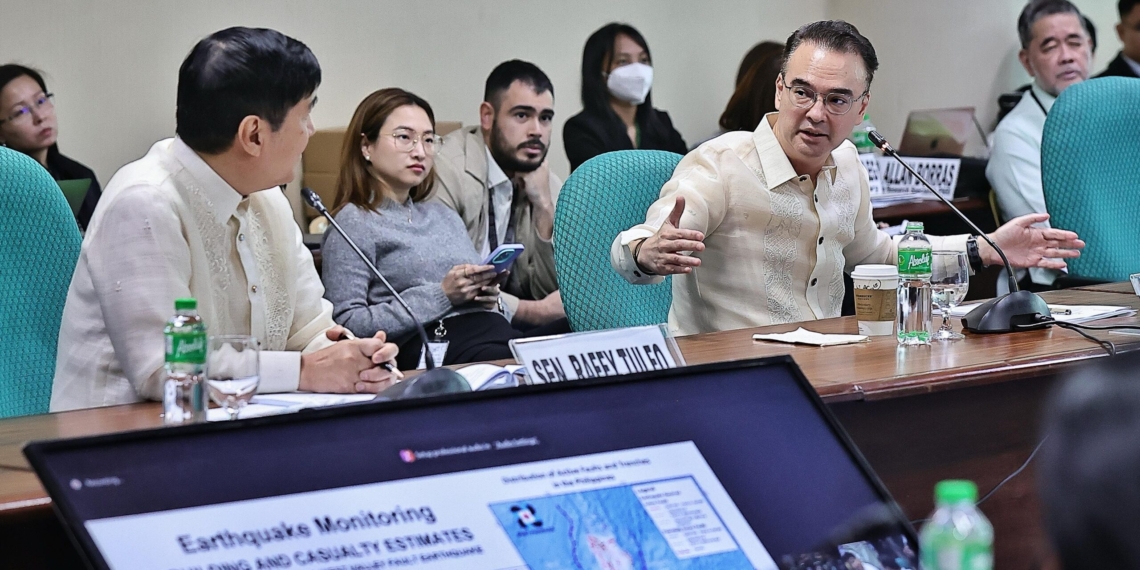Senator Alan Peter Cayetano on Monday stressed the importance of having a good system to cascade information as part of preparations for natural calamities and disasters.
Cayetano, who chairs the Senate Committee on Science and Technology, made this statement as he presided over the public hearing on the modernization of the Philippine Institute of Volcanology and Seismology (Phivolcs) and Earthquake Monitoring and Early Warning System Act.
“God forbid that the ‘Big One’ hits Metro Manila, and it can also hit Mindanao, Metro Cebu, or Baguio City. Not only should we consider the preparedness, but the cascading of information kasi as presented earlier, pwedeng down ang lahat ng [communication] lines,” he said during the hearing on February 12, 2024.
He said this when typhoon Yolanda hit in 2013, it was revealed that there were only 30 satellite phones in the whole government network held by the military at the time.
He said this was the reason there were no updates on the ground from the first 12 to 24 hours of the typhoon in parts of Leyte and Samar.
“In the future we’d like to ask the Metro Manila Development Authority (MMDA) and local government units (LGUs), if something does happen, are we dependent on cell phones? Kapag nawalan ng signal, do we have an alternative? Nagkaroon din ng problema ang satellite phones noon (during Yolanda) sa charging,” he said.
Cayetano said the Phivolcs should have these considerations vis-a-vis their modernization plans.
He also mentioned the importance of mapping public infrastructures that are on top of a fault line, while checking their lines of communication.
“I don’t know if any of our train systems, skyways are built on top of a fault line. Assuming meron na ngang tremor, is there any direct information about the LRT, MRT, Skyway, or is it through media na nagmomotor din sila?” Cayetano said.
Phivolcs Director Teresito Bacolcol said the agency usually provides information first to the National Disaster Risk Reduction and Management Council (NDRRMC) and Office of Civil Defense (OCD), which will be the ones to cascade the information.
Bacolcol said Phivolcs also posts real-time information through its social media accounts.
Fault line mapping
Cayetano also highlighted the importance of mapping the fault lines all over the country and distributing the information to agencies in charge of public infrastructure.
“Since titingnan na rin yung mga bahay [na nasa fault line], tingnan na rin natin yung MRT, LRT, highway so that we know if nakikinig lang ba sila sa media or meron ba silang direct information, kumbaga yung first red phone na magriiring kung may problema,” he said.
Regarding the demand for more staff in Phivolcs, Cayetano also suggested for the agency to come up with a scholarship program that would entice Filipino students to take up specific in-demand science courses such as hazard mapping.
“We’ll try to put something in the bill that would encourage Phivolcs to have a special scholarship program,” he said.
The hearing ended with Cayetano leading the approval of the Phivolcs Modernization Act and Earthquake Monitoring and Early Warning System Act as being passed at the level of the Senate Committee on Science and Technology.






